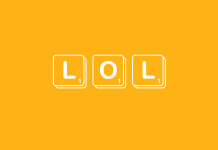Anyone who has a website cannot overlook the importance of SEO. The optimization of your web showcase for search engines is, in fact, essential for many reasons that we will now address in this guide dedicated to SEO, what it is for and the advantages it can bring to a website, a blog or a e-commerce.
Do you want to know what are the most effective seo strategies and tools to get a good ranking within the results of the most important search engines? Do you still have doubts about the benefits that search engine optimization can bring to your site or your ecommerce? Do you want to know how one of our SEO consultants can help you? Read below and get informed.
Table of Contents
What is SEO?

If you work in digital communication, you may have already heard the term “ SEO ”, which has become essential in recent years. But what is it exactly? Here is a simple definition:
SEO refers to the use of tools and techniques to make a website visible on search engines and, more particularly, to make it appear as high as possible in the results of a search.
Some explanations: when an Internet user performs a search on Google, Yahoo or Ecosia, the results are organized by algorithms and ranked in order of relevance to the keywords used in the search. Knowing that 100 billion searches are done every month on Google, and that 91% of clicks are on the first page of results, it is imperative that your website ranks among the top ten results to generate traffic. This is where the various SEO tools come in!
In simple terms? The goal of SEO is to make your website appear among the first results when users search on Google or other search engines for your products, your services or, even better, a need or a problem that you can solve. with your products or services.
How search engines work
The Internet is a huge network that collects websites, texts, videos, audio, images… The task of the search engines is to find the right page for the specific search of the user from this enormous sea of information .
An example: if a person searches for “plumber in Belluno” he expects the search engine to return the results of plumbers in Belluno and not of electricians in Belluno, or of plumbers in Rome.
In order to return to users the web pages most consistent with their search, Google and the other engines scan the web pages and, thanks to a complex algorithm, establish in which order to show them in the SERP, or among the search results.
What are the results of organic search engines?
The “organic” results (Read more) are those results that are provided by search engines once the user has entered a search string (query). These results are defined as organic as they are not paid, and differ from the “paid” results, ie those brought about by online advertising. These are the results that can be influenced through effective SEO.
Today, the search engine results page you will often find denoted by the acronym SERP ( Search Engine Results Page ) is also filled with ‘advertised’ results and other more dynamic organic result formats (called ” SERP features “). Some examples of SERP features are local packs, sitelinks, featured snippets.
Let’s take another example, if you search for “ Weather in Rome “, we will get a weather forecast for the city of Rome directly in the SERP and not just a link to a site that might contain that forecast. And if you search for “pizza Rome”, you will get a result that will also include pizzerias in Rome.
Always keep in mind that search engines make money from advertising. Their goal is to give the best answer to our queries within the SERP, to have users search often and to keep them in the SERPs for as long as possible.
In addition to the results that lead to websites, those that were traditionally referred to as “ the 10 blue links ”, some SERP features on Google are also organic and can be influenced by SEO.
Be careful though ! Not all search features, although not advertising, can be impacted by SEO. All those acquired from ‘certified’ sources such as Wikipedia or IMDB are part of these “non-influencing” data.
What are the different SEO techniques?

SEO techniques today fall into two categories:
●“Natural” referencing, also called SEO – Search Engine Optimization
●“Paid” referencing, also called SEA – Search Engine Advertising
By working on good SEO or SEA strategies, your website will have a better chance of appearing at the top of search results, thanks to previously created advertisements bearing the mention “ Advert ” on the left (SEA), or below, in the form of links from your website (SEO), as in the image below. Internet users will be able to click on one of these links and be directed to your website.
Difference between indexing and optimization
Often speaking of SEO, the terms indexing, optimization and positioning are confused. These 3 words, used as synonyms, instead have different meanings:
Indexing
It is the insertion of a web page in the database of a search engine. In simpler words, it means reporting the existence of the website to the search engine. It has nothing to do with the order in which the site is shown in the search results.
Optimization
By optimization we mean all the activities aimed at making the web page easily usable by the people and by the search engine robots that will scan it.
Positioning
Positioning is the consequence of optimization. This term refers to the improvement of a website’s position in the search results for a given query.
What does SEO consist of?

At this point you are probably wondering what are these activities, practices and actions to be taken to optimize and therefore position a website.
We can divide them into two macro categories: on-site activities , done on your website, and off-site SEO with actions external to the site. Going into more detail we have:
●optimization of the code and structure of the site;
●optimization of the contents(texts and images) of the site;
●Management of link inbound and outbound links.
Why is it important to be referenced?
The format is very engaging
Unlike advertisements on social networks like Facebook, Instagram, or more traditional advertising spots on radio or television, SEO is not a so-called “interruptive” channel. For example, when you’re on Facebook and browsing your News Feed, sometimes ads appear without you necessarily trying to view them. With these communication channels, messages are “pushed” directly to Internet users, thus taking on an interrupting, sometimes even intrusive character in your experience.
Referencing is a completely different tool because it occurs when the Internet user is in a phase of active search for information. Your content will thus be visible to people who have specifically carried out research related to what you offer on your website. This difference in approach is quite significant, and the user’s reaction to your content will not be the same as with so-called “interruptive” content.
SEO is ethical
The various traditional communication formats are often invasive or even undesirable. Whether it is marketing emails, flyers, advertising posters in public places, pop-up ads on radio or television, on social networks or on online music platforms, do we have really asked to view and listen to all this advertising content? Not really !
In this context of saturation of information from all sides, it therefore becomes complicated for those involved in change to make themselves heard through traditional communication channels and to raise awareness of their causes to an already over-solicited audience.
SEO pays off in terms of energy and time
SEO techniques (paid or free) take time and effort up front. However, they give positive results in the long term, without requiring major new interventions over time. These techniques are therefore highly profitable in terms of energy and time and require fewer resources than other more traditional tools such as social networks for example, where you must constantly create content to ensure the flow of visitors to your site. SEO doesn’t require all that energy. If configured correctly up front, the flow of visitors to your site will be almost automated.
SEO is strategic with respect to your objectives
The tools of digital communication are not exclusively intended for companies, and being well referenced on search engines has many advantages for any form of organization.
As an agent of change, SEO can adapt to a wide variety of your objectives : finding new beneficiaries for your programs, recruiting volunteers, collecting donations, selling products or services, having new members., signatories to your petitions, additional subscribers to your newsletter, new people who follow your social networks, etc …
SEO is more and more widespread
Today, more and more associations, foundations, and of course companies are using SEO to be more visible on search engines and reach as many Internet users as possible. If you do not use any of the SEO tools for your communication today, the shortfall for your structure is considerable.
Engaging, ethical, profitable and more and more widespread, a good SEO on search engines can lead to quite major results for your organization and integrate effectively into your overall communication strategy to achieve your goals! Ready to get started?
Why SEO is important
As you may have already guessed from the previous paragraphs, doing SEO activities is one of the activities to plan in a web marketing strategy because:
●it is essential to make your site visible and to appear in the search results;
●allows you to intercept people just when they are looking for a service, product or information by responding with your product, service or information.
A site can be beautiful and very accurate in graphics and content, but if people do not find it, it is of little use. If conceived as a marketing tool, the website cannot be limited to being only visually appealing, but must be found by the right people at the right time and SEO is one of the ways to do it!
Five reasons to do SEO on your site
If you want to ensure good visibility for your website, here are 5 good reasons to do SEO:
1. SEO is important because everyone uses search engines. Many people search every day, especially on Google, the most popular search engine in the world, for the words of their interest, both to satisfy their own personal curiosity and to acquire more information in anticipation of a possible purchase;
2. SEO is important because it helps build a solid brand image. Being present with your website in high positions on the SERP (the results page that the search engine shows every time a user makes a search) and being present for multiple search keywords helps the site / brand to attract the attention of users who, in this way, will begin to become familiar with it and consider it authoritative for that particular area;
3. SEO is important because it is easier to reach potential customers. As already anticipated, people, in the decision-making process that precedes a purchase (and, more generally, when they are interested in something) often search the Internet for the information they need;
4. SEO is important because it is easier to be reached by potential customers. Those who search on search engines for activities and places of interest near their locality have the possibility to more easily reach that activity that has worked well in the field of Local SEO (the optimization of a company website for local search results on search) and, which, therefore, is clearly visible and with complete and correct information on Google and its “similar”;
5. SEO is important because it delivers longer-term (and more consistent) results than PPC campaigns. The latter, in fact, guarantee the maximum of their effectiveness as long as you pay for the advertisements and they cost more on average.
The appearance of search engines
The beginnings of the creation of a worldwide data archiving system have their origins in 1945. In July 1945, Vannevar Bush, then director of the now defunct Office of Scientific Research and Development, published an article in The Atlantic, where he describes a system for collecting, extracting and inserting data, aimed at being shared. The description of this system corresponds to what Google has become today.
A few decades later, in 1990, Alan Emtage, a student at McGill University, developed Archie, whom some consider to be the very first search engine. Even if the question is debated and this tool remains primitive, at the time it represented “the best way to access information on other internet servers”.
The following decade saw a number of crucial developments, with the advent of search engines as you know them today:
●February 1993 : Six Stanford students create Architext, which later became a search engine called Excite. Some experts, such as Search Engine Land , claim that Excite is “revolutionizing the way information is cataloged”, making searches easier through “SEO results, based on the analysis of keywords found in crawled content” .
●June 1993 : Matthew Gray launches World Wide Web Wanderer, renamed Wandex a few weeks later.
●October 1993 : Martijn Koster presents ALIWEB, a search engine allowing webmasters to submit their own web pages. This search engine will unfortunately remain little known.
●December 1993 : There are now at least three search engines powered by crawlers (JumpStation, RBSE spider and World Wide Web Worm), which crawl both servers and published content online to provide better search results. relevant.
●1994 : Alta Vista, Infoseek, Lycos and Yahoo all introduce their own search engine to the market.
●1996 : Google co-founders Larry Page and Sergey Brin begin to develop a search engine they initially call BackRub.
●April 1997 : AskJeeves, which later became Ask.com, in turn appeared on the market.
●September 1997 : Google.com is officially registered as a domain name.
Also note that almost 12 years later, in June 2009, Microsoft launched Bing, the successor to Live Search, Windows Live Search and MSN Search. This is where SEO itself comes into play. With the use of search engines becoming more popular, webmasters are beginning to realize their potential.
The evolution of search and SEO

SEO in the 1990s
In the 1990s, search engines grew in popularity and the number of households with an Internet connection continued to grow. Access to information is therefore becoming easier and easier. However, there is a real problem with the low quality of this information.
Search engines were generally content to match the terms chosen by users with the results offered. A growing number of webmasters therefore decided to resort to keyword stuffing (the incessant repetition of the same keyword in a text), to improve the ranking of their web page for this keyword.
However, it should be remembered that keyword stuffing is a so-called black hat SEO technique, that is to say penalized by Google guidelines, because it makes it difficult to understand a text overall.
Thanks to this black hat SEO technique, webmasters could generate more traffic and make more profits thanks to the paid advertisements present on their websites.
In addition to keyword stuffing, webmasters used excessive inbound links to establish their authority.
At the time, there were no SEO criteria and by the time the algorithms were adjusted to remedy these problems, other black hat practices, which were not penalized by these latest adjustments, were emerging.
When Larry Page and Sergey Brin get into the development of Google, that’s one of the issues they want to solve. In 1998, they published an article in which they declared that “advertising is the dominant economic model for search engines”, but they recognize that “the objectives of this economic model do not always focus on providing search results of quality. quality to users ”.
It is in this same article that the two students mention for the first time PageRank, the technology used by Google to reference search results based not only on keywords, but also on the quality of websites. .
Some even believe that it is this technology that paved the way for SEO as we know it today.
SEO in the 2000s
The early 2000s also marked the beginning of Google’s hegemony. As the company develops less ad-centric technology, it is also starting to develop a guideline for white hat practices (those considered to be in line with Google guidelines), to help webmasters get their listings sites without resorting to questionable methods widely used in the 1990s.
From 2000 to 2002: the desire for quality content
However, Google’s guideline does not yet have a real impact on site SEO and few webmasters are bothered by it. This is partly explained by the modus operandi of PageRank, which is based on the number of inbound links available to a given web page (the more it counts, the better it is referenced), although it did not exist at the time. no way to measure the authenticity of these links.
In the early 2000s, the use of inbound link creation techniques still made it possible to reference pages that did not match any search criteria.
Nevertheless, during a television interview in 2001, journalist Charlie Rose asks Larry Page and Sergey Brin the reasons for their success, the latter insisting that at the time Google was nothing other than a search engine, which considers “the web as a whole, and does not limit itself to determining which terms appear on each page”.
This interview paves the way for the first major updates to search engine algorithms, which then begin to analyze these terms more carefully.
From 2003 to 2004: the first SEO penalties
It was in November 2003, with the Florida update, that this approach to the web that was no longer limited to the simple analysis of terms really took shape.
The number of sites whose SEO is suffering from this update is very high, but it is important to note that it is also beneficial for many sites. This is the first time that websites have been penalized for using techniques such as keyword stuffing, signifying Google’s desire to put the user’s interests first, mainly by offering them quality content.
In addition, in 2004, one of the first versions of Google voice search appeared. Nonetheless, the New York Times describes the experiment as inconclusive. Indeed, it is necessary to formulate a request on the telephone platform of Google before clicking on a link, the handset in one hand and the mouse in the other).
This invention nevertheless announces the future importance of SEO on mobile devices (but we will have the opportunity to come back to this point later).
2005: year of numerous launches
2005 represents a pivotal year in the history of search engines. In January, Google, Yahoo and MSN teamed up to develop the nofollow attribute to, among other things, reduce the amount of spammy links and comments posted on websites, especially blogs.
Then Google launches personalized search in June, which takes into account a user’s search and browsing history to provide more relevant results.
In November, Google Analytics was launched, which is still used today to measure traffic and campaign return on investment.
2009: turning point
The year 2009 bears witness to a desire for restructuring in the world of search engines.
Bing was founded in June and Microsoft launched an aggressive marketing campaign to position it as the search engine that produced significantly better results than Google. However, Bing is a long way from causing Google’s decline, and its advice on content optimization doesn’t really contrast with that of its competitor.
According to Search Engine Journal, the only noticeable difference between Bing’s keywords in URLs, as well as terms written in capital letters and pages from high-authority websites, according to Search Engine Journal, is the only notable difference between them two search engines.
In August, Google is offering a preview of Caffeine, its new algorithm update, and is asking for user input to help it test this new infrastructure. Moz says it is “intended to speed up the crawling process for bots, grow the index, and integrate near real-time indexing and SEO.”
It will take almost a year for Caffeine to be fully implemented, as the algorithm must also help the search engine to improve speed of execution.
However, in December, a real-time search tool allowing Google to include tweets or last-minute information was born. This position confirms that SEO is no longer exclusively the business of webmasters, and that journalists, web editors and community managers must now also optimize their content for search engines.
SEO in the 2010s
When you do a Google search, sometimes it’s fun to watch the suggestions offered as you type. They are the result of the implementation, in September 2010, of Google Instant technology. At first, Moz claims that she reduced SEO to ashes before realizing that it has no real impact on site SEO.
Google Instant, just like the different phases of the evolution of SEO from 2010, only represents an additional step within the framework of Google’s main mission: the user is placed at the center of the debates.
2010 also marks the advent of the importance of social content for SEO. In December, Google and Bing add social signals to their arsenal. These initially make it possible to display any post published by the network of a Facebook user, for example, corresponding to a search that he performs.
Google is also starting to reference Twitter profiles with a certain number of inbound links.
2011: the Panda update
The policy of penalizing sites seeking to misuse Google’s algorithm is still in its infancy.
Some incidents are more notorious than others, such as the one involving Overstock.com in 2011. At the time, the Wall Street Journal argued that domains ending in edu generally showed greater authority with Google, which Overstock uses to its advantage. The site then targets keywords such as “vacuum cleaners” or “bunk beds” and asks educational institutions to provide it with inbound links by offering discounts to students and faculty members. These links allow Overstock to improve its ranking for searches including the targeted keywords, until the company stops using this method, which Google penalizes shortly thereafter.
2012: the Penguin update
In April 2012, Google took another step in the process of rewarding quality sites and launched the first of many updates to Penguin.
Penguin targets sites that show ingenuity in their use of black hat SEO practices, for example those offering mostly informative content interspersed with hyperlinks of a spammy nature and unrelated to the title of the content in question.
The development of local search on Google
In the tradition of updating algorithms named after animals, Google is launching the Pigeon algorithm, which will have a significant impact on local search results.
The algorithm seems to have been designed to improve searches on Maps, which then begin to be processed with the same technologies as those of other search functions, such as the Knowledge Graph, spell checking or synonyms. At the time, local research was on the way to becoming essential and has continued to be so.
2017: propensity to favor mobile
This last program began to index websites according to their mobile version in the course of 2017. It will also end in September 2020 as announced by Google.
As a reminder, the use of mobile devices is on the rise. According to a study, 51% of digital media are consumed on mobile compared to 42% on desktop. So it seems logical that SEO continues to explore this area.
This is already reflected in Google’s propensity to develop a user-friendly mobile user experience. We also predict that voice search will be one of the next big things in SEO.
2016 to 2019: SEO and social networks
While the introduction of Google’s real-time search in 2009 had some social ramifications, social networks are now an essential part of any SEO strategy.
When Google begins, for example, to index tweets in 2011, the phenomenon portends a future where information research on social networks will be carried out under the same conditions as traditional searches. This indexing may represent the future of Google, a time when the use of search engines will be totally different from what we know today.
If you type a celebrity’s name into Google, for example Barack Obama, the first page of results will include their Facebook and Twitter profiles. Indeed, it is one of the first things that a user seeks to obtain when performing this kind of research.
The future of SEO

Natural referencing will evolve towards ever more interactivity and readability for Internet users, according to the SEO trends planned for 2020. First of all, the design of sites will become a major issue, with a responsive design imperative in the face of the End of the Mobile Index First program in September 2020. In addition, changing expectations in terms of load times and 0-click trends make technical optimization crucial.
In addition, the notion of request and response will become increasingly important in the future. Whether it concerns the BERT update, contextualizing the keywords included in the query, or the growing share of voice search, the engine’s understanding of the Internet user’s intention will be greatly improved. Likewise, for the Internet user, the experiences offered will always be more intuitive, with even more relevant results and more efficient for people who want to create a personal blog or to promote their business.
The expectations are found in the 0 clicks and the 0 position, content highlighted at the top of the SERP and providing an immediate response when the Internet user is running out of time. For this, the engines will encourage and facilitate the implementation of structured data on the sites, as Google has done by offering a simulation tool for example. Finally, the interaction will gain in weight, such as the addition of augmented reality features to visualize animals in 3D on compatible devices.
































































